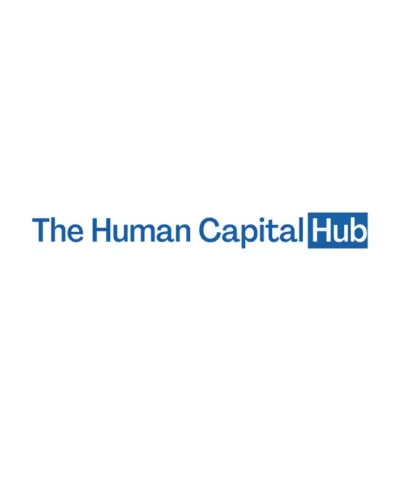HR teams face the brunt of regulatory and compliance challenges in healthcare as they work to ensure that all hospital practices are legally compliant to avoid costly and reputation-damaging litigation.
These pressures take the form of credentialing, workforce planning, and documentation, which are all costly, time-consuming practices. These challenges are increasing each year, with increasing litigation cases and challenges to safety practices.
This article explains and illustrates how these shifts are quickly reshaping HR workloads and how they approach their long-term strategies. If you are a healthcare leader, especially an HR healthcare manager, this article will support your understanding of how to navigate regulations safely.
The Expanding Compliance Landscape in Healthcare HR
Many new and still evolving regulations are reshaping hiring, training, and how patient records are stored in healthcare.
These challenges present an ever more complex assault course of regulatory challenges every healthcare organization must successfully complete to avoid litigation and maintain a positive reputation that conveys safety and trustworthiness.
Why healthcare? This sector experiences higher compliance scrutiny than most other industries for one main reason: Healthcare organizations are responsible for the care of the most fragile and legally valuable creatures: human beings. Without these regulations, healthcare organizations would be able to harm humans with impunity and without accountability or legal recourse.
The role of HR is to balance patient safety standards with operational realities, which is an essential but hugely challenging task.
Credentialing Complexity and Verification Pressures
Healthcare HR teams don’t have it easy. They are currently facing tighter rules, faster verification demands, and rising administrative pressure. Hospital managers must know how evolving regulations create delays, increase workloads, and require more precise compliance management to support HR in becoming compliant while balancing profits.
Longer Credentialing Timelines
Credentialing used to be a simpler process. But today, longer credentialing timelines are commonplace, driven by stricter verification steps, slower licensing workflows, and growing documentation requirements.
These delays limit how quickly healthcare organisations can begin contracts for new hires, slowing the filling of essential clinical and support roles when staffing needs become critical.
Manual Processes That Slow Down Hiring
Despite the high investment in healthcare technology, this future-proof approach doesn’t usually extend to HR, which uses many manual processes to build, store, and maintain patient records and carry out other practices.
This lack of automation in many healthcare HR departments delays the delivery of compliance practices and increases the risk of human errors in credential documentation and cross-state licensing.
Rising Demand for Specialized Skill Verification
The demands on new hires to prove that they hold the specialized skills they claim are increasing and contributing to HR headaches in healthcare organizations across the globe.
These demands are driven and exacerbated by a growth in advanced practitioner roles such as Nurse Practitioner, Certified Registered Nurse Anesthetist (CRNA), and Physician Assistant, which increases the documentation burden for HR and prolongs the time before new hires can begin working.
Structural Shifts in Health Departments and Agencies
Another significant driver of dramatic changes in healthcare regulation and compliance is structural shifts in health departments and agencies, especially during US leadership changes.
A recent and dramatic example of this is the HHS reorganization during the second Trump administration, which oversaw the merging of five existing agencies into a new Administration for a Healthy America.
These dramatic reorganizations cause endless pain points for healthcare organizations, especially in:
Workforce allocation: Structural shifts reshape team distribution, redirecting staff toward newly prioritised services and functions.
Funding lines: Reorganizations alter budget ownership, changing how departments access resources and justify staffing needs.
Policy enforcement: New structures redefine oversight pathways, creating different compliance expectations and monitoring responsibilities.
HR responsibilities: Agency changes expand HR workloads, adding new reporting duties, coordination tasks, and role clarification needs.
HR gets hit hardest by these changes, as it must build new reporting systems, update compliance rules, and not just alter but often rebuild from scratch new workforce models.
HR leaders must stay abreast of these changes to ensure their HR team can plan the resources to confront them head-on and maintain services throughout these radical shifts.
Enterprise AI’s Role in Supporting Regulatory Change
As mentioned, manual processes can lead to severe delays, which affect profits when HR deals with radical regulatory compliance shifts using manual processes.
The answer? Fast, cheap, powerful automation provided by enterprise AI. These tools can speed up repetitive HR processes like compliance documentation and credential tracking, so new hires can get to work faster to save lives and generate revenue using compliant practices. Predictive workforce models can also forecast staffing needs based on the latest regulatory updates.
LLMs in healthcare take the bulk of the legwork out of the hands of already-strained HR staff by interpreting regulatory changes, summarizing complex documentation, and identifying risks in policy updates.
AI-driven insights provided by these LLMs can also reduce operational friction and speed up decision-making, making them a no-brainer investment for all healthcare organizations.
Conclusion
Rapid and radical regulatory and structural changes are quickly reshaping healthcare HR in a way that they form a legal basis to demand healthcare agility, stronger compliance systems, and proactive workforce planning.
Emerging enterprise AI tools will increasingly help healthcare HR teams manage the challenges of escalating regulatory complexity. The only way modern healthcare organizations will survive new regulations is to use these smarter processes and tools to build more resilient, compliance-ready healthcare operations prepared for ongoing change.



